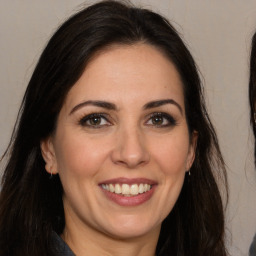Introduction
This report is prepared in order to understand issues that affect business performance. In this report, three topics are covered like strategy development process, organizing for success and leadership as well as strategic change. In order to comprehend these areas of the business management related literature reviews are considered while preparing this report. Strategy plays an important role in growth of an organization and each and every organization with passage of time brings changes in its strategy. In this report, various authors’ definitions on strategy development are considered and discussion is carried out on their views. Same thing is done in case of organization of activities and leadership as well as strategic change. At the end of the report, conclusion is derived on the basis of discussion on all these three areas.
PATCH 1- Strategy development processes
Google is well known company and it is known for developing innovative products. Google comes in existence in 1998 and it was formed by Larry page and Sergey Brin. Both of them have completed their studies from Stanford University. In 1998 both combined developed their own search engine and same due to new and innovative features gain acceptability form internet users across the globe. Currently, Google is leading the industry and it gains this position by making innovation in its products. Due to this it manage to develop commendable position in the relevant industry. Vision of Google is to develop innovative products in order to make people life better. This means that the company’s strategy is to make heavy investment in research and development cell. Google since its inception is following a common market strategy under which it looks after needs to each and every kind of person. In marketing its product Google makes an attempt to show that their products fulfill requirements of each and every sort of internet user. Over many years it is consistently focusing on bringing up innovations its products. Due to this reason today, innovation is one the most important USP of Google in its advertisements. USP is also known as unique selling proposition. Innovation creates a different image of the Google across the world. Today it is most respected brand in the world. Google does not alone grow on the basis of innovation but strategies that it follows are also a big reason behind its success. However, it is fact that innovation was always part of its growth strategy. By using unique strategy and innovation; the company always remains ahead of its competitors. In order to grow rapidly Google formulates a strategy ad in this regard it follow a specific process Google form many new innovative products that other companies can imagine to create (Google who drives the strategy, 2015). Google brings its technology advanced mobiles that gives strong competition to the existing players. It also develops an online map through which a person can view any location all over the world. It starts bookmarks service through which an individual can approach a specific site and he does not need to remember that site name whenever required. Due to development of very unique products company always remain ahead of its competitors. The reason behind such success is its way of strategy formulation. Google top management believes in taking ideas from each and every department. In this way it also uses intellectual capital of its workforce. Moreover, company also takes care of its clients whether they are small in size. Google provides small entrepreneurs an easy ways to advertise their products. In this way it creates a loyal client base. Not only has this it had every size of business organization in its client portfolio (Google who drives the strategy, 2015). In strategy formulation Google believes in its employees and it believes in taking ideas from each and every employee. This is the reason due to which Google always remains ahead of its competitors.
Google follow an intended strategy under which it does not stuck to its search engine business. Over the years, it starts operations in other fields like blogging, radio and TV advertising etc. Google intention was to lead an industry and due to this reason it does not stop to single point and with specific time gap it diversified its business and start operating in new areas. Along with this Google also develop its own intranet which is known as Moma. It tracks huge amount of data. By analyzing data Google is capturing and tracking information in systematic and organized manner. Due to this reason on time it comes to know about innovation requirements. According to innovation requirement it makes changes in its product line.
Intended strategies are those strategies that are formulated deliberately by the management. There is a specific process that is followed in formulation of intended strategy. His main components of this process are strategic planning, strategic leadership and external imposition. Under first step a specific steps are followed in order to formulate a strategy. Then in second step strategy is forwarded to the top managers. Then they check that strategy is in line to company vision or not. After finding strategy in alignment to company vision external imposition factor is considered. Means that there may be some external factors like government newly formed regulations or venture capital firms due to which company may needed to bring change in its strategy as per external factors. After following these three components intended strategy is formulated by the company.
Similar to intended strategy; in case of emergent strategy also there are series of steps like logical incremental, learning organization, organization politics and organization culture and resource allocation process. In case of emergent strategy first of all by applying logic experiments that company can apply are identified. In this regard organization goal and environment uncertainty are primarily considered. In step of learning organization entire situation is analyzed and it is confirmed that experiments that management wants to do will help organization in handling uncertain situation that occur suddenly. In third step which is political view company make sure that its new experiment will allow it to bargain and negotiate with its stakeholders. Finally, resources are allocated in order to ensure that intended experiment will be implemented in proper manner.
Intended and emergent strategies do not emerge in isolation. Actually, firms prepare intended strategy but with change in business situation it is difficult to achieve objective. In such a situation emergent strategy is formulated under which experiment is done in order to achieve targets that were determined in case of intended strategy.
Guarantees Beyond Your Imagination
ORDER NOW- Money-Back Guarantee
- Unlimited Amendments
- Ownership Guarantee
- Individual Attention
PATCH 2- Organizing for success
Hurricane Katrina comes in USA in 2005 which leads to 9000 causality cases and 96 billion amount properties get destroyed. This was one of dangerous tragedy in USA history in terms of disaster. It is also known as first natural or manmade disaster in the mentioned nation history. After devastation of property due to Katrina FEMA (Federal emergency management agency) was appointed as agency to look after disaster related situations (Chapter thirteen: Organized for success, 2015). FEMA failed to completely achieve its target and it was criticized for its poor performance. Experts states that there was a lack of action, slow response rate and disorganized resolution plans. In other words it can be said that there was lack of coordination among FEMA employees. Due to lack of coordination they failed to complete tasks on time. Moreover, rescue process was very slow. Due to lack of coordination response rate was gradual and FEMA takes a long time to complete allocated tasks. All efforts were made in disorganized manner and due to these reason employees efforts were in different direction. In other words it can also be said that efforts were not directed towards a single direction (FEMA: Hurricane case study, 2008). Lack of proper direction was also on e of the big reason responsible for failure of FEMA in achievement of objectives. The other reason for FEMA failure was curtailment in its budget. Michael Chertoff as a president of FEMA brings many new changes in the mentioned organization. He stripped off many functions of FEMA and due to this reason budget of the company get reduced by 80 million. FEMA was note very well clear that Hurricane will heat city or not. As a result, many people do not leave their home and looted factor was another factor behind their decision not to leave home. FEMA planning was to start migration operation two days earlier before hurricane attack New Orleans. It planned that there will be 69 truck-loads of water, 69 truckloads of ice and 34 truckloads for migration operation Along with this, it also planned for 400 buses and 800 drivers to transport people to shelters. But inverse happen and FEMA had only 30 truckloads of water, 17 truckloads of ice and 15 truckloads of meals. There were no buses for mentioned operation. This happens due to lack of budget. Hence, wrong reorganization of FEMA was another reason behind its failure.
Before reorganization FEMA was an independent organization it was controlled by the director that was appointed by threw central government. In terms of chain of command director of FEMA control entire operations and head of federal insurance administration, national fire prevention and national weather service community preparedness program works under director of FEMA. Leadership style of FEMA was democratic and government agendas were in its top priority. FEMA was independent has it was in better position to respond to fund and disaster requirements.
After reorganization FEMA comes under Department of homeland security and due to this reason it looses its independence. Earlier director of FEMA warned about this negative consequences and he proves right. Due to loose of independence budget of FEMA gets curtailed and decision making power at own level reduced to large extent. As a result, it failed to handle disaster that comes through Hurricane. Hence, it is recommended that FEMA must be made independent organization again. If this is not done then appropriate authorities must be given to FEMA director. So that in case of any natural disaster he does not need to waits for orders and guidance from officers of Department of homeland security
What is organizing for success?
According to Bryson, (2011) organizing is an important management function that plays a key role in success of any organization. This is because by organizing an activity authority and responsibility of each and every employee is determined. As a result, everyone comes to know role that they have to perform for achievement of the specific target that is related to specific task. In views of Grant, (2010) organizing is a heart of management and performance of each and every task. Without it none of activity can be performed in efficient and effective manner. Hence, organization of activities is a necessary for success of any project or business organization.
Why is organizing for success is necessary?
According to Smith and Lewis, (2011) organizing is necessary for success and without it resources cannot be utilized in efficient and effective manner. Normally, it has been seen that an organization use lots of resources for achieving a specific objective. But due to lack of organizing and clarity of roles resources are not used properly. Moreover, clash between employees comes in existence due to lack ambiguous roles and responsibility statements. Hence, it is necessary that there must be no confusion among employees regarding performance of duties. If this will be done then resources will be used efficiently. Along with this objectives will also be achieved on time.
PATCH 3 – Leadership and strategic change
HM naval base cycle is also known as Faslane. Earlier this naval base was under government control. But with passage of time it has been seen that management of naval base is not performing well and there is a lack of proper management. Due to this reason in 2002 government of UK entered in to partnership with private sector company Babcock. The main responsibility of this company was to improve efficiency level of an organization. Along with this reduction in cost was another important responsibility of the mentioned company. This private company plays a decisive role in improvising efficiency level of naval base. This private company formulates an emergent strategy (Managing change at Faslane case study essay, 2015). Emergent strategies are those strategies that come in existence due to change in situation. Change in situation may be in terms of origination of new opportunities and threats. With emergence of new situation company bring changes in the strategy. In respect to this Babcock brings many new changes in an organization. Babcock reduced management layers on naval base. Earlier management level was seven, which was reduced to four level of management. Earlier, review process was fifty six days but Babcock reduces these review days for fifty six days to six days. This company also changes leadership style that was earlier used to operate naval base. Earlier in leadership style top down approach was followed (Sunita- startegic choices, 2014). But Babcock brings changes in this approach and now below top approach is followed at the naval base. New partner also managed human resource of naval base. In respect to this, Babcock reduces number of employees at the naval base. Apart from this, it also allows its employees to make team at their own level. This was done to increase productivity of employees at naval base. Due to this reason, efficiency level of naval base gets increased.
John Howie change style was directive in nature and he implemented changes that he thinks suitable for Faslane. He does not carry out any discussion with his subordinates before implementing any change at the workplace. On other hand Craig Lockhart is a different person and he has long corporate experience. His change style is totally different from John Howie. He follows collaboration change style. In other words it can be said that he implement any change only after discussing with the subordinates. After obtaining consent he implements any change at the workplace.
Change programs are very effective in an organization if they are framed and implement in the proper manner. Changes may prove good or bad for an organization. Many times managers under this program make a big mistake and bring change that will create a lot of problem for an organization. In this way change management become disadvantageous for an organization. Hence, change management has both positive and negative impacts on an organization. Change management activities bring revolutionary change in an organization. But drafting of good change management program requires that managers must have good analysis and forecasting skills. All managers do not prepare accurate forecasting and due to this reason loopholes remains in change management program. This is major limitation of Change programs.
Get 25% Flat Discount on Each Order + 5% Extra By Placing Through App
Place Your OrderWhat is strategic change?
According to Hambrick, Finkelstein and Mooney, (2005) strategic change is a process in which restructuring is done in order to achieve an organization important objective. In an organization there are many weak points and in order proliferate business it is necessary to remove these weak points. Concept of strategic change is followed in order to remove these weak points. Companies whether they are large, small or medium in size bring strategic change in their business. Strategic change can be brought through many ways like policies can be changed by the top management; strategy formulation process can also be changed etc. In the views of strategic change gives a new direction to the business organization. By making change in business policies and ways of operating, a business manager gives perfect direction to an organization. Many large giant firms time to time bring changes in their business in order to increase their profitability and efficiency level.
Correlation of leadership and strategic change
According to Herman, (2011) there is a strong correlation between leadership and strategic change. If leadership will be good then good strategic change can be bring in an organization. In same way if leadership will be weak then strategic change will not be good. Hence, there is a very strong and positive correlation-ship between leadership and strategic change. In views of Helfat and et.al (2009); leadership plays a prominent role in bringing strategic change in an organization. A leader does not alone make a decision he take and gives guidance to and from his team members. In this way, he gives lots of knowledge to his team members. Thus, leader and his team members make excellent decisions regarding bringing strategic change in an organization. If leader does not give his help to the team members then it is very difficult to implement good strategic change in an organization.
Ways to bring strategic change
In terms of overview it can be said that when Faslane was under government control it was very difficult to manage it. Moreover cost of operations was very high. This happens due to inefficiency in operations. In order to sort out this problem it was decided that management of Faslane will be transferred to the private sector company Babcock. Company performs well and by using its experience it generates economics of scale for Faslane. As a result unprecedented change was observed in case of Faslane cost. Hence, it can be said that Babcock successfully achieves its target. Leadership plays a great role in success of Babcock. Craig Lockhart give a good leadership to Faslane and due to his excellent leadership and good change style he bring tremendous change in the company cost structure.
In order to manage a change and to bring further changes there is a need to bring change in change style. Craig Lockhart can adopt consultative change style under which he will communicate with all those people that will be affected by his decision. By consulting with other he can bring excellent changes at Faslane.
CONCLUSION
On the basis of above discussion it is concluded that strategy plays a key role in growth of an organization and an organization must analyze its business strategy time to time. Along with this at middle level managers must make sure that activities are organizing properly; so that no confusion remain regarding communication of performance of task. There is a very high degree of relationship between leadership and management. Thus, leaders must be selected carefully in the business organization. This is because quality of the management of the firm totally depends on leadership that leader gives to his team members.
References
- Adner, R., 2006. Match your innovation strategy to your innovation ecosystem. Harvard business review. 84(4). pp. 98.
- Allen, P. M., 2012. Cities and regions as self-organizing systems: models of complexity. Routledge.
- Anderson, D. and Anderson, L. A., 2010. Beyond change management: How to achieve breakthrough results through conscious change leadership. John Wiley & Sons.
- Bryson, J. M., 2011. Strategic planning for public and nonprofit organizations: A guide to strengthening and sustaining organizational achievement . John Wiley & Sons.
- De Chernatony, L., 2010. From brand vision to brand evaluation: the strategic process of growing and strengthening brands. Routledge.
- De Wit, B. amd Meyer, R., 2010. Strategy: process, content, context: an international perspective. Cengage Learning EMEA.
- Doz, Y. L. and Kosonen, M., 2010. Embedding strategic agility: A leadership agenda for accelerating business model renewal. Long range planning. 43(2). pp. 370-382.
- Elenkov, D. S., Judge, W. and Wright, P., 2005. Strategic leadership and executive innovation influence: An international multi-cluster comparative study. Strategic Management Journal. 26(7). pp. 665-682.
- Finkelstein, S., Hambrick, D. C. and Cannella, A. A., 2009. Strategic leadership: Theory and research on executives, top management teams, and boards. Oxford University Press.
- Grant, R. M., 2010. Contemporary strategy analysis and cases: text and cases. John Wiley & Sons.











